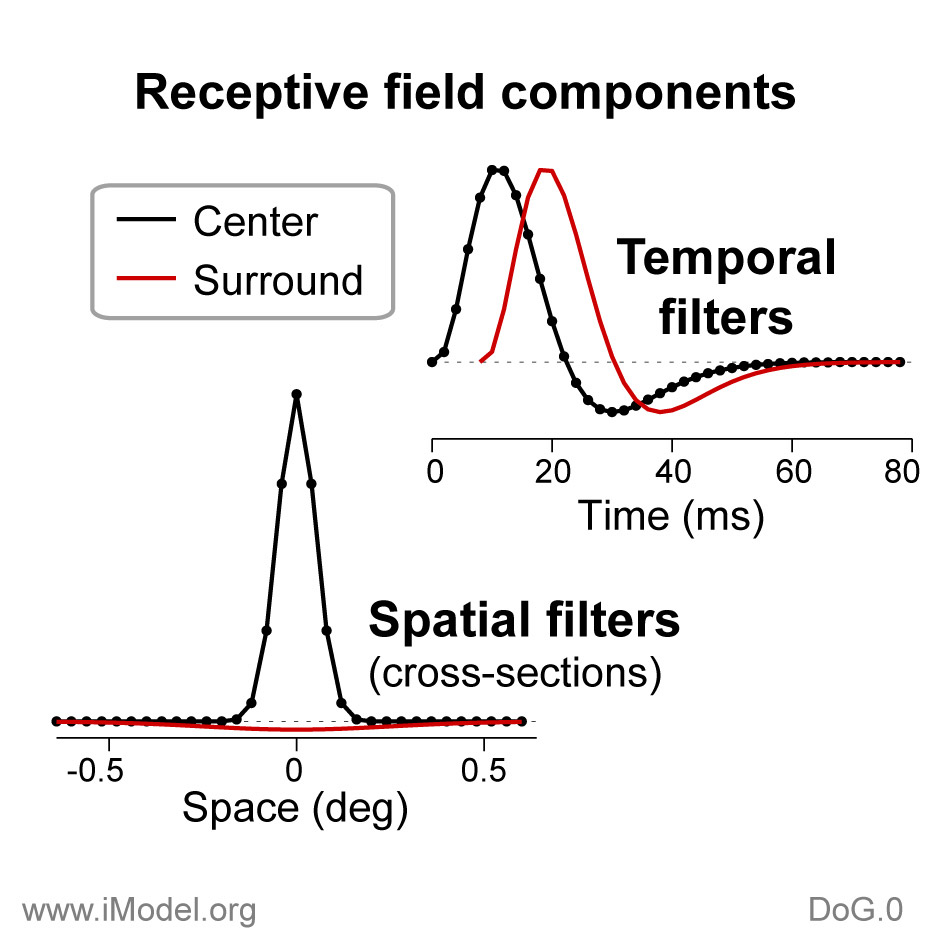iModel
DoG
Difference of Gaussians, Integrate-and-Fire
SummaryDifference of Gaussians, Integrate-and-Fire
This difference of Gaussian (DoG) model consists of a linear filter followed by a conductance-driven integrate-and-fire unit. The surround Gaussian is delayed relative to the center, and each Gaussian has a separable temporal filter.
Results
References
- Rodieck RW, Stone J (1965) Analysis of receptive fields of cat
retinal ganglion cells. J Neurophysiol 28:833--849.
- Enroth-Cugell C, Robson JG, Schweitzer-Tong DE, Watson AB
(1983) Spatio-temporal interactions in cat retinal ganglion cells
showing linear spatial summation. J Physiol 341:279--307.
- Derrington AM, Lennie P (1984) Spatial and temporal
contrast sensitivities of neurones in lateral geniculate nucleus of
macaque. J Physiol 357:219--240.
- Levitt JB, Schumer RA, Sherman SM, Spear PD, Movshon JA (2001) Visual response properties of neurons in the LGN of normally-reared and visually-deprived macaque monkeys. J Neurophysiol 85:2111--2129.

The visual stimulus is convolved with a 3D spatiotemporal linear
filter that is constructed from the components shown above. The
filter is the difference between a narrow center filter and a wider
surround filter. The center and surround filters are each the product
of a 2D Gaussian and a biphasic temporal function.
The output of the linear filter is scaled and offset and taken as the excitatory conductance input to a leaky integrate and fire spiking model. Gaussian filtered Gaussian white noise is added to this conductance.